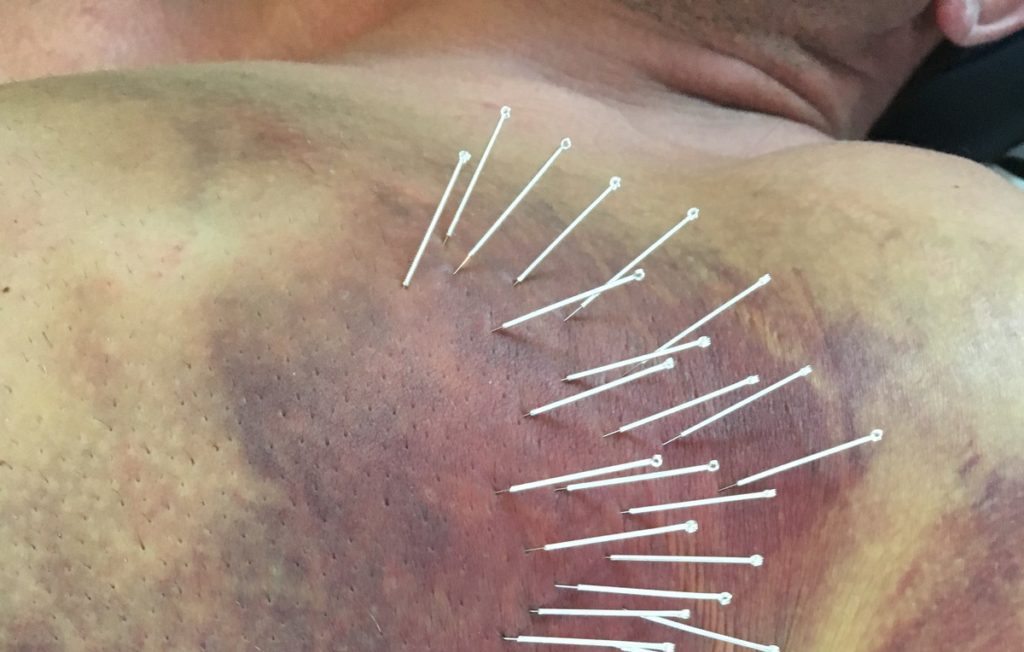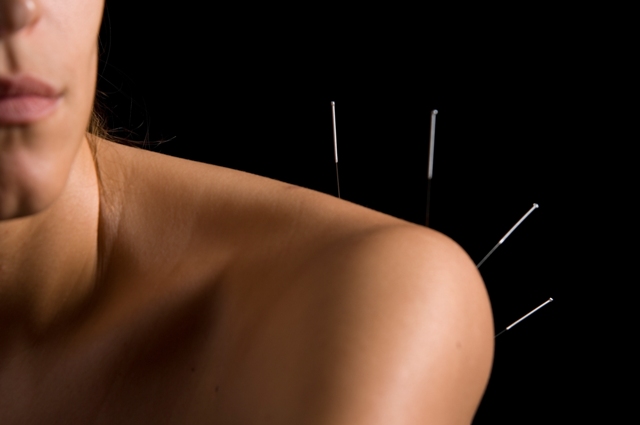Recent publications have started to shed some light on an often-asked question I get from students in class all the time. How do I know how many needles and for how long for injury X or Y?
This has been an often-asked question for many therapeutics and easier to answer for some more than others. For instance, the path to getting a pharmaceutical drug approved allows for the study of various doses of a medication and determines the dose-response curve associated with its use. This allows for both verifying that the drug works and the dosing necessary for effects both good and bad. However, in manual therapy or other less controlled studies, it becomes more difficult to answer. The question of dose-response is one we are starting to get some grasp on in dry needling.
What is dose-response?
Dose-response is discussed when trying to determine the effects of a particular treatment on a population of individuals. A dose-response relationship is one in which increasing levels of exposure are associated with either an increasing or a decreasing probability of a therapeutic effect. Demonstration of a dose-response relationship is considered strong evidence for a causal relationship between the exposure and the outcome. Dose-response relationships are often described in biostatistical analysis using dose-response curves. And through these reasonable population-based decisions can be made about how to dose a patient1,2.
It is often easiest to think of this in the pharmacologic mindset. Have you ever considered how your healthcare provider knows how much of a medication to prescribe? Dose-response curves are essential to understand the drug’s safe and hazardous levels so that the therapeutic index can be determined and dosing guidelines can be created3. A dose-response curve is a coordinate graph relating the dose of a stimulus to the body’s response. Many doses can be studied across time. The measured dose is generally plotted on the X-axis, and the response is plotted on the Y-axis. These curves appear different in all cases, but a hypothetical one may look like this.
Boghog, CC BY-SA 4.0, via Wikimedia Commons
By studying these curves, one can decide the best possible dose across a population of individuals may be3,4.
Minimal or maximal effective dose?
For the purposes of our dry needling, wouldn’t it be nice if we had the intensive study of dosing relative to the population? In particular, it would enable us to determine the minimal and maximal effective dose may be.
Everything in life has a maximum dose before it becomes harmful. Sue and I often use the analogy of water when teaching. Water is excellent for our bodies. It is often discussed as a way to maintain health and the body’s homeostasis. But in fact, you can consume too much water and even kill yourself by overhydrating.
So, determining an effective dose that produces a biological response we desire in our patients is a worthy pursuit. This is generally defined by the range between the minimum effective dose and the maximum tolerated dose. The minimum effective dose is the lowest dose level of a therapeutic intervention that provides a clinically significant response. On the flip side of this is the maximum tolerated dose. This is the highest dose that is tolerable and does not provide side effects that impact the patient negatively.
So why all this discussion of Dose-Response?
Recently there has been a publication that attempted to look into the question of dose-response in dry needling5. The authors attempted to answer the question my students often pose through an exploration of optimal treatment dosage. They reviewed the literature on the number of needles inserted and the needle retention time across multiple differing diagnoses. Their conclusions were quite interesting. They found that for most neuromusculoskeletal conditions, it appears that when trigger point only dry needling is used, the treatment may be suboptimal compared to strategies where multiple needles are inserted and left in situ for 20 to 30 min durations5.
Another important finding is that larger effect sizes are often demonstrated when using electric dry needling instead of dry needling alone. They use this information to conclude that trigger point only dry needling has not yet been shown to produce as significant and clinically meaningful results in the literature. They state that “while trigger point dry needling is not ineffective, it is likely more powerful when packaged as part of a multifaceted needling framework” 5. The number of needles and treatment duration are two variables that affect treatment dosage, and they should therefore be tailored to each condition and the individual patient.
The last point they discussed was that the number of needles and treatment duration are two variables that affect treatment dosage. They should therefore be tailored to each condition and individual patient5. So, we don’t yet know the exact minimum or maximum dose parameters for the population. So, using the doses provided in the literature as a starting place is important. When digesting the literature into your clinical practice, dosing considerations such as the overall health of your patient, underlying co-morbid conditions, and the patients’ past experience with needling should all be considered, and your dose parameters explored should keep these in mind. However, this review article clearly demonstrates a dose-response relationship across the diagnoses they studied. The longer needles are left in place and with the use of electric stimulation (increased dose), the greater the effectiveness of the treatment.
Conclusions
Dosing considerations are essential when determining the effectiveness of a treatment. This review article demonstrates that there is indeed a dose-response with needling. As clinicians, we should be considering the use of needles in situ with electric stimulation for a time of 20-30 minutes if we want to maximize the therapeutic effects of our treatment. This recommendation is right in line with our treatment philosophy and instruction.
If you would like to learn these types of dry needling treatment approaches and how Structure & Function Education’s Pentamodal Method of Dry Needling can help your patients, enroll today at structureandfunction.net.
References
- Adrian Kilcoyne, Phil Ambery, Daniel O’Connor. Pharmaceutical Medicine. OUP Oxford; 2013. Accessed June 15, 2021.
https://eastcheshirenhsebooks.wordpress.com/2018/01/22/pharmaceutical-medicine/amp/ - Nahler G. dose response relationship. Dictionary of Pharmaceutical Medicine. Published online January 2009:55-55.
https://link.springer.com/content/pdf/10.1007%2F978-3-7091-1523-7.pdf - Calabrese EJ. The Emergence of the Dose–Response Concept in Biology and Medicine. International Journal of Molecular Sciences. 2016;17(12):2034. doi:10.3390/ijms17122034.
https://www.ncbi.nlm.nih.gov/pmc/articles/PMC5187834/4 - Tsatsakis AM, Vassilopoulou L, Kovatsi L, et al. The dose response principle from philosophy to modern toxicology: The impact of ancient philosophy and medicine in modern toxicology science. Toxicology Reports. 2018;5:1107-1113. doi:10.1016/j.toxrep.2018.10.001.
https://www.ncbi.nlm.nih.gov/pmc/articles/PMC6226566/ - Butts R, Dunning J, Serafino C. Dry needling strategies for musculoskeletal conditions: Do the number of needles and needle retention time matter? A narrative literature review. Journal of Bodywork and Movement Therapies. 2021;26:353-363. doi:10.1016/j.jbmt.2020.12.003
https://pubmed.ncbi.nlm.nih.gov/33992269/





